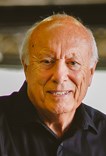 Peter Starr is a motorcycle racer, TV producer and filmmaker whose work includes dozens of productions about motorcycles and motorcycling—bringing the message that motorcycles are fun, exciting, practical and liberating to countless riders and non-riders.
Peter Starr is a motorcycle racer, TV producer and filmmaker whose work includes dozens of productions about motorcycles and motorcycling—bringing the message that motorcycles are fun, exciting, practical and liberating to countless riders and non-riders.
Born in Coventry, England, on Nov. 2, 1942, Starr started riding motorcycles at an early age and turned his love for bikes into a four-year stint working for Triumph in the early 1960s. He raced Ariels, Nortons and a Triumph T100.
“While attending the equivalent of American high school, I had an art teacher, Bob Gallon, who would come to school towing his race bike with his BSA Gold Star,” Starr remembered. “That really captured my interest, and after I graduated at 16, I got to ride a friend’s BSA Phantom, and then as soon as I could, I bought an Ariel Arrow and eventually that became my first race bike.”
After moving to the United States in the mid-1960s, Starr spent six years as a rock-and-roll DJ and two years as a record producer before turning back to motorcycles as a filmmaker. His first film, “Bad Rock,” was about the ISDE qualifier in Oregon.
“While working in record production, I started a business with a contact in publishing selling greeting cards in motorcycle dealerships while at the same time trying to sell a song, called ‘Dirt Riding Men,’” Starr said. “Hodaka’s marketing guy Marvin Foster talked to us, and while they ultimately weren’t interested in the song, while visiting them in Pendelton, Ore., he ended up telling me about Bad Rock and how we needed to make a film about it.”
Starr said Hodaka agreed to put up $6,000 to fund the film, while he sold Penzoil on putting up “another $6,000 to $7,000, and we made the movie.”
The break came when Los Angeles’ Channel 11 ran the production and “doubled their Sunday night ratings.” That, Starr said, got the attention of Datsun (now Nissan), which saw the film as an attractive advertising means for their vehicles, and it was distributed all over America.
Starr’s most famous film, though, was “Take it to the Limit,” which won Gold and Silver Awards at the Chicago and Houston International Film Festivals.
Starr said that several elements made “Take it to the Limit” successful.
“It was the first documentary that was produced in Dolby Stereo,” Starr said. “But it also was the first that had a string of hit songs as a part of it. When we were negotiating the music rights for the film, no one had done that before for a documentary, and because of that everyone we talked to was very accommodating. Today, those rights would cost you at least $1 million.”
The film also starred riders who, at the time, were at the top of the sport.
“We dealt with the best riders in a way that really engaged the viewer,” he said. “We were very lucky to have riders like Mike Hailwood, Barry Sheen, Roger DeCoster, Russ Collins—just a series of riders who at the time were the best.”
In addition to “Bad Rock” and “Take it to the Limit,” Starr produced and directed more than 50 television specials on motorcycling and motorsports. Among his groundbreaking achievements are the first film camera mounted on a motorcycle during an AMA National Race at Laguna Seca in 1980 and the first live broadcast from a motorcycle in competition at the AMA National in Duquoin Mile for ABC’s Wide World of Sports in 1985. He designed and built the first fully functional motorcycle sidecar camera vehicles for use in major movies, including “Batman and Robin,” “Apollo 13” and “Lethal Weapon 3.”
In recent years, Starr has been an international ambassador for motorcycling, perhaps most notably in Taiwan where a group of aging motorcyclists known as the “Grand Riders” have captured the public mindshare for their promotion of motorcycling as a way to extend an active lifestyle.
In 2012, the Taiwanese government commissioned a video about Starr, Starr’s efforts to bring American riders to Taiwan and the extent to which Starr has been embraced by the Taiwanese riding community.
Although his collaboration with the Grand Riders—which Starr has written about for American Motorcyclist—is his best known, Starr has championed the benefits of motorcycling on tours throughout Europe, as well as Australia, Ecuador and Canada.
Starr also has been a leader in increasing awareness of prostate cancer, both early detection and treatment options. A survivor of prostate cancer, Starr has given dozens of free seminars across major U.S. cities in recent years as part of his Trans-USA coast-to-coast motorcycle rides.
Starr said that his “pursuit of purpose” has fueled his evolution from filmmaker to one of American motorcycling’s grand ambassadors.
“When I was diagnosed with cancer in 2004, I spent a lot of time thinking about dealing with aging, and I concluded that it required living a purposeful life,” he said.
“For me, motorcycling was always a theme of my life,” he continued. “The concept for me became looking forward, and creating something with motorcycling that was very important to me, such as dealing with these chronic diseases, and that is what brought me to the Grand Riders in Taiwan, who represented everything I was about.”
Starr said that this positive mindset can help increasingly more riders as they age.
“The motorcycling demographic is getting older,” he said, “and being a rider gives you something to always look forward to.”